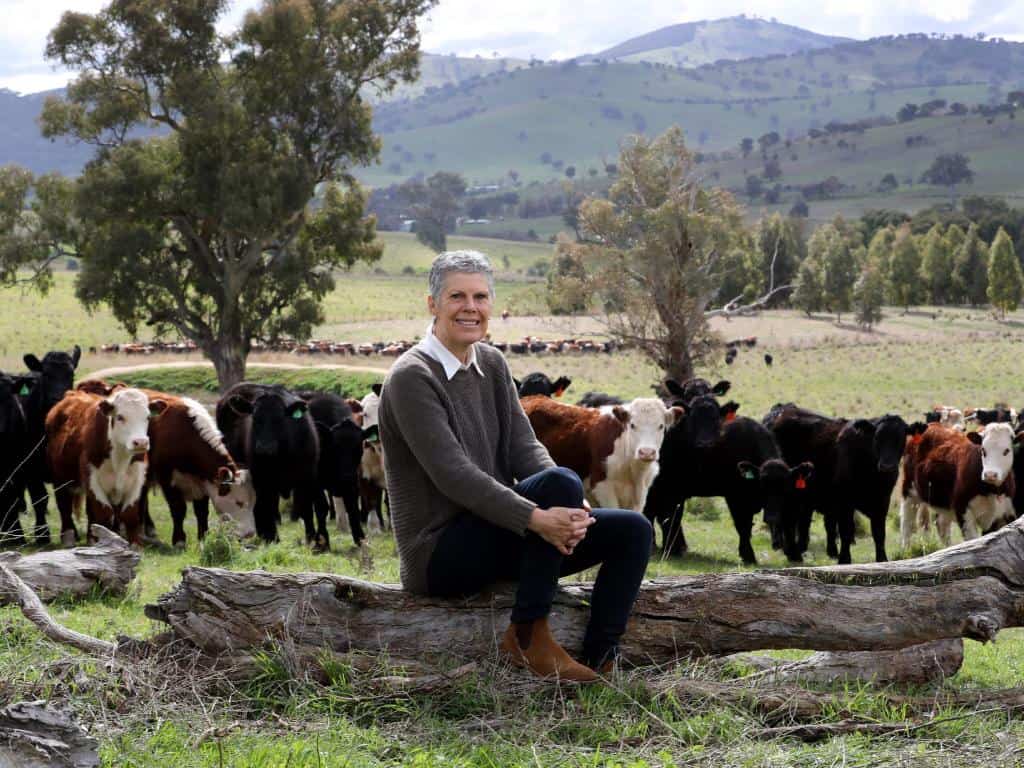On the importance of nutrient-dense soil and thoughtful farming practices
There is a quiet revolution going on in agriculture—the regenerative farming revolution. It responds to farmers’ concerns about the quality of food being produced in the modern age and the degradation of the land and soil where the food is produced. Our soils are losing the capacity to hold moisture and carbon. Changing land management practices can be one of the solutions to all of this, and to our own health and wellbeing issues.
My property Bibbaringa is north of Albury on the southwest slopes of New South Wales. It is one thousand hectares of native and improved grasslands, and I produce beef cattle for the grass-fed market. Each year I purchase about 400 to 500 young steers from the high country in North East Victoria around Omeo and grow the cattle out on Bibbaringa. I focus on the bio-diversity of plants and organisms on my farm and on allowing plants to recover from grazing. I am creating conditions to encourage native perennial grasslands, which are more resilient to climate change and provide a fast response to rainfall.
Since purchasing Bibbaringa in 2007 I have planted over 70,000 Australian native trees and shrubs, re-fenced the property into 65 paddocks and managed the cattle based on the practices of holistic management. I also practice natural sequence farming based on the principles of Peter Andrews (as seen on ABC TV’s Australian Story). I have incorporated his methods to slow the flow of water through the landscape with ground cover, trees and leaky weirs. Basically, we need more biodiversity in the soil, plants and human diet.
It’s important to me that I have happy, content cattle. Each day or two the cows are moved to a fresh paddock, and I spend time with them as they settle into their new environment. The paddocks are rested for up to 240 days. This allows the grasses and plants to fully recover. For me it is important to create an environment where plants recover and produce as much green leaf area to maximise photosynthesis.
In the past year I have worked with groups of farmers in NSW and Victoria who are similarly managing their properties based on the principles of holistic management and other regenerative agriculture practices. We make decisions that utilise the resources available to us. We have minimal imports from industry like chemical fertilisers, pesticides and fungicides. And we allow animals groundcover and water retention to build soil. We work with the variable climatic conditions and utilise the rainfall that falls on our properties as efficiently as possible. This process is applicable to large and small farms, variable climatic and geographic conditions.
The groups meet every six to eight weeks and support a new way of thinking and producing healthy food from healthy environments. We want the land we manage to function centuries into the future. We are not pushing for production at all costs but are mindful of the natural capital we are building. It will be good to see a time where natural capital appears on the balance sheets of all companies and we are rewarded for land stewardship.
Land managers are in the unique positon of being part of the climate solution by storing carbon in soils and trees. The plants draw the carbon from the atmosphere into the roots so that it can be stored in the soil. In 2007 when I purchased Bibbaringa the soil carbon was about one percent and now it is nearly four percent. By increasing soil carbon I am increasing the soil’s organic matter and ability to hold moisture.
My concerns are about the industrialisation of farming practices and consumer’s disassociation with the source of their food and fibre. I am also concerned about the quality of food in the food chain and how it affects my children and generations to follow. Food is our medicine and we need to be educated and ask for healthy food from healthy soils.
We all have power here. Consumers can influence the production of what they eat by selecting food from regenerative farming practices and asking for it from supermarkets, food producers and government. Essentially, they’re asking for quality, nutrient-dense food where there are no residual chemicals. It’s a completely fair ask. In my view, regenerative farming is about the quality of food, not the quantity. And it is time for farmers to be rewarded for the nutrient density of what they produce. It can’t be just about providing huge amounts to “feed the world”—which is a fallacy given distribution of food around the world is probably the biggest issue.
I understand some people see animals as part of the climate change problem and there is resistance to farmed animals. But there can be balance. Animals trim the grasses, humans manage the animals to allow the plants to recover, the plants photosynthesise and so the cycle continues.
I feel positive about the future and feel change is happening and we all need to work together to make the change happen. I say to my sons when they return from overseas disillusioned about the state of the planet, “Just do something, be a conscious consumer, lower your footprint and together we will all make a difference.” We have no choice. It is a magnificent planet we live on and nature has the most amazing ability to heal. We just have to work with nature.

